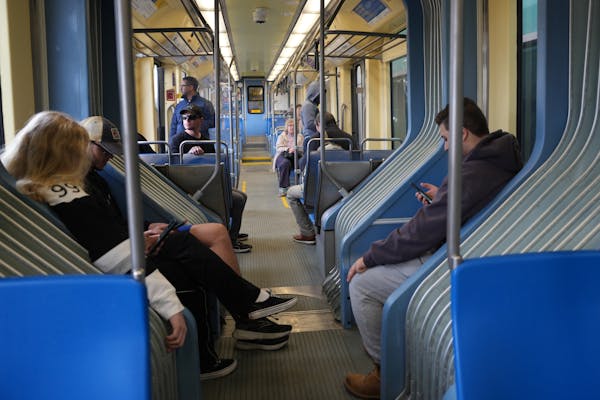Eva Hyvarinen was recently on a Metro Transit Route 11 bus when she noticed movement near the front. She looked up and did a double take.
She saw a TV monitor mounted behind the driver displaying images from outside the bus, then inside and finally an image of her.
"At first, I thought, what in the world is that?" said the Minneapolis resident who has been riding public transportation since 1982. "Oh, that is this bus. I found it disconcerting. It made me sick. I didn't see any explanation for it."
Metro Transit is installing monitors this year that show what's being captured by onboard cameras on hundreds of buses as the agency works to improve safety on the state's largest public transportation system.
Like cameras at retail self-checkout stations, the purpose "is to remind people when on transit there are expectations that you behave in a certain way. It's a reminder there is a watchful eye and their behavior is being recorded," said spokesman Drew Kerr.
As part of a concerted effort to beat back crime, Metro Transit over the past year has put into place steps outlined in its Safety and Security Action Plan to address issues such as homelessness, smoking, drug use and violent crime. The agency has stationed unarmed security guards at problem light-rail platforms and transit stations, put Transit Rider Investment Program (TRIP) agents on trains to crack down on fare evasion and revised its Code of Conduct to give riders clear explanations what's expected of them.
The monitors are part of the action plan.
Frontline staff like drivers like Howard Hudson suggested Metro Transit install the screens as another way to deter bad behavior.
"I like them," he said. "I'm excited about being part of change. They record what is going on."
The agency is spending about $3,000 per bus to install the system, which takes footage from six to eight cameras and displays recordings on a screen near the front of the bus. The images, which change every few seconds, are beamed to headquarters where transit staff can watch and dispatch help if necessary.
"There are no dead spots," said Metro Transit Chief Operating Officer Brian Funk.
Hyvarinen, who suffers from motion sickness, finds the rotating images nauseating and invasive. While she is aware security cameras are on the bus, she doesn't see the point of broadcasting what they pick up.
"I don't want to see anybody in the back of the bus, and I don't want to see things I don't want to see," Hyvarinen said. "What do I do if I see something that looks dangerous? If people are going to fight, a camera won't stop them from having a fight. It does not make me feel safer."
St. Paul police: officers shoot, kill woman who pointed gun at them after suicide call

Witnesses in Feeding Our Future trial testify they saw no meals served

St. Cloud State to eliminate nearly 100 programs, 57 faculty in latest cuts

